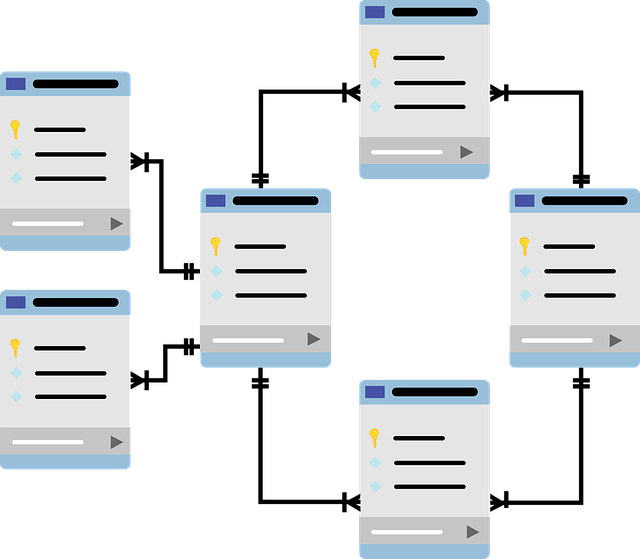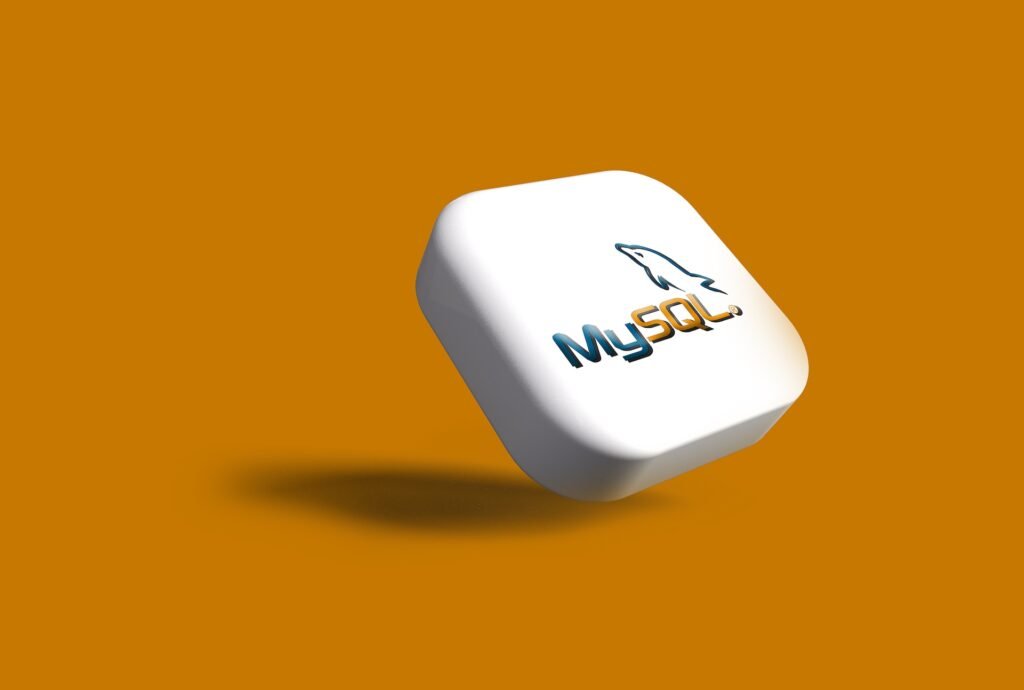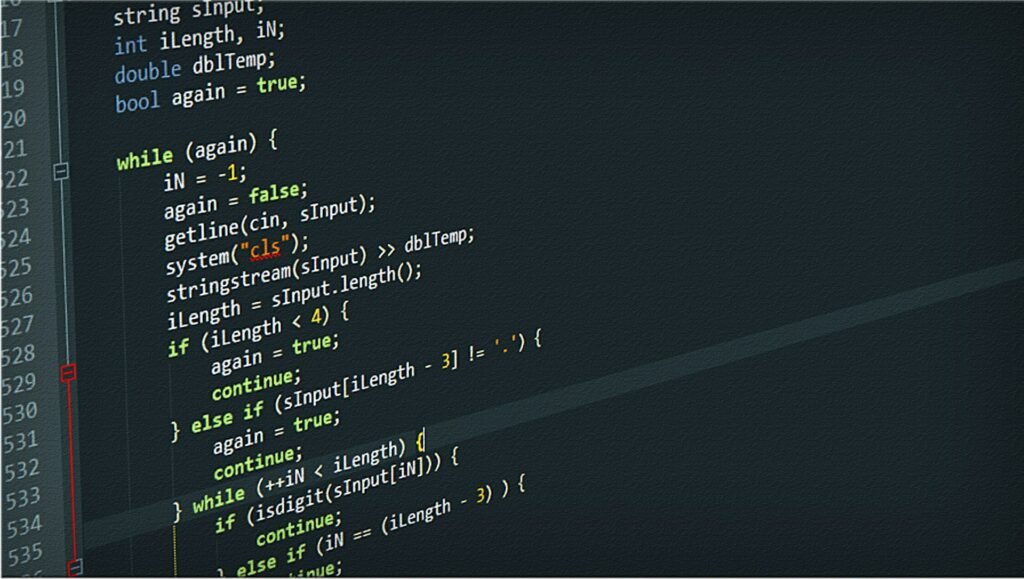mysql
A popular relational database management system (RDBMS) for managing and storing data is known as my structure query language. It is open-source. It is one of the most widely used database systems for data storage and retrieval, and it is frequently used in online applications.

What is mysql
An open-source relational database management system (RDBMS) known as my structure query language enables users to organize and store data. The relational database model, on which it is built, arranges data into tables with rows and columns. my structure query language main language for communicating with the database is SQL (Structured Query Language).
Here are some important my/sql-related points.
- Open-Source – Because my structure query language is created and offered under an open-source license, it is accessible for unrestricted use, distribution, and modification. This has helped it become widely used and popular.
- Client-Server design – my structure query language has a client-server design, in which the database server controls and stores data while clients connect to the server to view and modify the data.
- Multi-user and Concurrent Access – my structure query language enables concurrent usage of the database by several users. Multiple users can complete activities without interfering with one another because to its concurrent access capabilities.
- Cross-Platform Compatibility – Among other operating systems, my structure query language is compatible with Windows, Linux, and macos. It is adaptable and frequently utilized in a variety of software development contexts since it can be used with many programming languages and frameworks.
- Data Integrity and Security – Using constraints and validations, my structure query language offers tools for enforcing data integrity. Administrators may set permissions and limit unauthorized access to the database thanks to the support for user authentication and access control.
- Scalability and Performance – The scalability and performance of my structure query language are well-known. It supports a variety of optimization techniques including indexing, caching, and query optimization to improve speed and can handle enormous volumes of data effectively.
- Data Redundancy, Load Balancing, and High Availability – my structure query language has replication tools that allow the production of numerous copies of a database for these purposes. This enhances system dependability and data availability.
- Triggers, Stored Procedures, and Functions – In addition to stored procedures and functions, which are programmable database objects used to carry out complicated operations and computations within the database, my/sql includes triggers, which are actions initiated by certain database events.
In many different situations where the storing and administration of structured data is necessary, including online applications, content management systems, e-commerce platforms, and data warehousing, my structure query language is utilized extensively.
Advantage and disadvantage of my/sql
When selecting a database management system, it’s necessary to consider the benefits and drawbacks that my/sql has to offer.
Here are some of my structure query language main benefits and drawbacks.
The Advantages of my/sql.
- Usability – Both inexperienced and experienced users can use my/sql thanks to its simple interface and simplicity. It offers simple administration tools and a simple installation approach.
- Open-Source and Economical – Since my/sql is an open-source database, it may be used, modified, and distributed without charge. This makes it a cost-effective choice, particularly for startups and small enterprises with tight resources.
- Strong Community Support – my/sql has a huge and vibrant user and developer community that actively supports and contributes to its development. The continual improvement, regular updates, and a lot of tools and forums for troubleshooting and learning are all made possible by this community-driven methodology.
- Performance and Scalability – my/sql is renowned for its outstanding performance, particularly with workloads that need a lot of reading. To improve query execution performance, it supports a variety of optimization strategies including caching and indexing. In addition, scalability and high availability are supported by my/sql’s replication and clustering functionalities.
- Broad Compatibility – my/sql works with a wide range of frameworks, computer languages, and operating systems. It is a flexible option for online applications since it interacts nicely with widely-known web development platforms like PHP, Python, and Java.
The disadvantages of my/sql.
- Limited Functionality – my structure query language offers a comparatively small number of sophisticated features and functions as compared to certain other database management systems. Complex data models or situations requiring sophisticated data processing might not be appropriate for it.
- Absence of some business-level features – my/sql is acceptable for many small- to medium-sized projects, but it could be deficient in some functionality found in commercial databases at the enterprise level. There may be limitations with my/sql when it comes to features like integrated backup and recovery, sophisticated security measures, and thorough monitoring tools.
- Stability and Reliability – Despite the fact that my/sql is often stable and dependable, users have occasionally experienced data corruption or instability, especially when utilizing particular settings or extensions. These risks can be reduced by staying up to date with the most recent stable versions and using best practices.
- Limited Support – Despite the robust community support network for my/sql, official technical support from my structure query languagel may call for a paid license. This implies that access to official help may be restricted for free users for urgent problems or unique requirements.
- Limitations of myisam – myisam, the default storage engine offered by my structure query language, lacks capabilities like referential integrity restrictions and transactions. The innodb storage engine, in comparison, offers similar functionalities but may sacrifice some performance.
Best features of my/sql
As a database management system, my/sql is well-liked and productive thanks to a number of standout features.
Here are a few of my/sql’s greatest attributes.
- Scalability and Performance – my structure query languageis known for its outstanding scalability and performance. It is built to effectively manage heavy traffic loads and massive amounts of data. It offers a variety of performance-improving optimization techniques, including query optimization, caching, and indexing. High availability and horizontal scalability are also made possible by my/sql’s replication and clustering features.
- Cross-Platform Compatibility – Among other operating systems, my structure query language is compatible with Windows, Linux, and macos. Its seamless platform compatibility makes it a flexible option for developers working in a variety of settings.
- Data Security – To safeguard sensitive data, my/sql has strong security measures. To manage user rights and prevent unwanted access, it offers user authentication and access control procedures. Additionally, my/sql provides encryption for data both in transit and at rest, protecting the privacy and accuracy of the information.
- Data Redundancy, Load Balancing, and High Availability – my/sql enables replication, allowing you to make several copies of a database for these purposes. The database is made more accessible even in the case of a breakdown thanks to this feature, which also improves data availability.
- Triggers, Stored Procedures, and Functions – In addition to stored procedures and functions, my/sql also provides triggers, which are operations brought about by particular database events. You may automate processes, carry out intricate computations, and enforce business logic within the database itself by using these programmable database objects.
- Flexibility and Customizability – my/sql offers a number of storage engines with varied features and performance parameters. Data consistency is ensured by the default innodb engine, which supports transactions and referential integrity requirements. For particular use scenarios, other engines like myisam and Memory are appropriate. Due to this flexibility, developers are able to select the best storage engine for their unique needs.
- Data Integrity and Consistency – Using constraints like primary keys, unique keys, foreign keys, and check constraints, my/sql enables you to impose data integrity. These controls aid in maintaining data consistency and stop the database from storing any incorrect or false data.
- Broad Language Support – my/sql is easily integrated with a variety of application frameworks since it is compatible with a wide range of programming languages and apis. For well-known languages like PHP, Python, Java,.NET, and many more, it offers connectors and drivers.
- Community Support and Documentation – my/sql has a huge and vibrant community of users and developers who support and contribute to its growth. A multitude of resources, documentation, forums, and online communities where users may obtain assistance, exchange expertise, and cooperate are made possible by the community-driven approach.
Mysql for download
You may use the Downloads section on the official my structure query language website to download my structure query language.
The steps to download my structure query language are shown below.
- Visit the mysql website – Go to https://www.mysql.com to see the official mysql website.
- Choose “Downloads” – On the home page of the mysql website, find and select the “Downloads” tab in the top navigation menu.
- Select the mysql edition – You may download many editions of mysql from the Downloads page. Choose the version based on your requirements. If you’re seeking for the open-source version, you could go for the mysql Community Server.
- Select the operating system – After selecting the edition, you’ll be given the chance to select from a number of different operating systems. The operating system that best suits your system setup should be clicked.
- Pick the download package – You’ll normally find a number of download alternatives on the operating system-specific download page. Select the bundle that best meets your needs. The download package that is commonly suggested for consumers is the one marked “Recommended Download.”
- Agree to the licensing agreement – You might be asked to do this before starting the download. Read the terms and conditions, and if you agree, click the corresponding checkbox or button to continue.
- Download the package – Click the download link or button to begin the download after you have accepted the licensing agreement. Your local computer will save the package.
You may install my structure query language on your machine by following the installation instructions supplied by my structure query language once the download is finished.
Mysql work
The official integrated development environment (IDE) offered by MySQL for planning, creating, and maintaining mysql databases is called mysql Workbench. To make database-related operations more efficient, my structure query language Workbench provides a graphical user interface with a number of tools and capabilities.
Mysql create a table
The CREATE TABLE statement in mysql may be used to create a table.
Here is an example of how to make a straightforward workers table with a few columns.
CREATE TABLE employees (
Id INT PRIMARY KEY,
First_name VARCHAR (100),
Last_name VARCHAR (100),
Join_date DATE,
Salary DECIMAL (10, 2)
);
The employees table in the example above contains columns for the employee’s ID, first and last names, join date, and salary. Using the PRIMARY KEY constraint, the id column is designated as the primary key.
When making your own table, keep in mind to modify the column names, data types, and any other restrictions in accordance with your unique requirements.
Mysql workbench
An integrated development environment (IDE) called mysql Workbench is one that my structure query language offers for planning, creating, and managing mysql databases. With the help of its graphical user interface (GUI), users may carry out a number of database management-related operations.
Here are some of mysql Workbench’s main attributes and features.
- Database Modeling and Design – mysql Workbench offers a visual tool for modeling and developing databases. You may construct table associations, specify data types, change existing tables, and impose restrictions. You may use the graphical interface to visualize the layout of your database.
- SQL Development and Querying – The SQL editor in mysql Workbench offers syntax highlighting, code completion, and query execution. SQL queries, stored procedures, and functions may all be written and executed. Additionally, the editor offers capabilities for formatting, scrutinizing, and debugging SQL code.
- Data Import and Export – You may import and export data to and from mysql databases using mysql Workbench. You may export data in multiple forms and import data from a variety of file types, including CSV and SQL files. Data exchange with other systems, data backup, and migration are all made easier by this functionality.
- Server Administration – Server administration is made possible with the help of mysql Workbench’s administrative tools for controlling mysql servers. You may manage user accounts and rights, start and stop servers, adjust server parameters, and check on the status of servers. Database backup, restore, and recovery options are also available.
- Performance adjustment and Optimization – The mysql Workbench has tools for performance adjustment and improvement. In order to locate bottlenecks, you can study execution plans and analyze query performance. It offers information on server performance indicators, resource use, and improvement suggestions.
- Database Migration – The mysql Workbench facilitates database migration by offering tools and wizards for transferring data from other database systems to mysql. A guided migration procedure enables you to transfer data, map source, and destination schemas, and create links to various databases.
- Collaboration and version control – mysql Workbench enable teamwork between different database developers. The integration of database schema modifications, team communication, and change tracking are all made possible by its support for version control systems like Git.
- Visual Tools and Dashboards – For administering and monitoring database instances, mysql Workbench provides visual tools and dashboards. System variables, server logs, and server status are all accessible. Performance dashboards are another tool offered by The Workbench for tracking and studying important indicators.
The operating systems Windows, macos, and Linux all support mysql Workbench. It is a component of the mysql Community Edition, which may be obtained from the official mysql website.
Mysql download
These are the steps you may take to download my structure query language.
- Visit the official mysql website – Navigate to https://www.mysql.com to access the official mysql website.
- Select “Downloads” – On the homepage of the mysql website, find the “Downloads” option in the top navigation menu, and select it.
- Select the mysql edition – You may download many editions of mysql from the Downloads page. Choose the version based on your requirements. If you’re seeking for the open-source version, you could go for the mysql Community Server.
- Select the operating system – After selecting the edition, you’ll be given the chance to select from a number of different operating systems. The operating system that best suits your system setup should be clicked.
- Pick the download package – You’ll normally find a number of download alternatives on the operating system-specific download page. Select the bundle that best meets your needs. The download package that is commonly suggested for consumers is the one marked “Recommended Download.”
- Agree to the licensing agreement – You might be asked to do this before starting the download. Read the terms and conditions, and if you agree, click the corresponding checkbox or button to continue.
- Download the package – Click the download link or button to begin the download after you have accepted the licensing agreement. Your local computer will save the package.
You may install mysql on your machine by following the installation instructions supplied by mysql once the download is finished.
Mysql vs postgresql
Popular relational database management systems (RDBMS) with a variety of features and functionalities include MySQL and postgresql.
Here are some significant comparisons between postgresql and my structure query language.
- Data Integrity and Consistency – Foreign key relationships, constraints, and triggers are just a few of the techniques that both mysql and postgresql enable to assure data integrity. Data consistency requirements can be more strictly enforced with postgresql’s more sophisticated options, such as check constraints, exclusion constraints, and postponed constraints.
- SQL Compliance – postgresql is renowned for its strict adherence to standards and high degree of SQL compliance. It supports complicated queries, window functions, common table expressions (ctes), and other sophisticated SQL techniques. It also implements a wider variety of SQL features. While mysql has improved its SQL compliance over time, it initially put a strong emphasis on simplicity and convenience of use, and as a result, it may differ from and have less features than postgresql.
- Data Types and Extensibility – postgresql provides a wide range of pre-built and user-defined data types, such as arrays, JSON, XML, geometric kinds, and more. It lets users to build their own functions, operators, and aggregates and offers significant support for new data types. Although it supports the most popular data types, mysql offers a relatively constrained list of data types. It also allows user-defined functions and stored procedures.
- High Availability and Replication – Both postgresql and mysql offer tools for replication to make multiple copies of a database for better scalability and availability. Master-slave and master-master replication options are available in mysql’s built-in replication functionality. Inbuilt streaming replication, logical replication, and third-party utilities like Pgpool-II and Bucardo are just a few of the replication possibilities that postgresql provides.
- Scalability and Performance – mysql is renowned for its scalability and performance, especially for workloads that need a lot of reading. It uses a variety of optimization strategies, including query caching, indexing, and effective storage engines like innodb. Recent years have seen substantial performance gains for postgresql, which is aided by its sophisticated query optimizer and indexing features. Both databases are capable of handling high traffic loads and big data volumes, although depending on the workload and setup, different performance characteristics may apply.
- Community and Ecosystem – The communities for both postgresql and mysql are vibrant and committed, offering support, participating in development, and providing a wide range of third-party tools and extensions. Because mysql has been around longer and has a bigger user base, there are frequently more resources and community assistance accessible. Despite having a limited user base, postgresql has a dedicated and technically savvy community that places a strong emphasis on quality and resilience.
It’s crucial to remember that the decision between my structure query language and postgresql depends on a variety of factors, including preferences, use cases, and needs. When deciding which database management system is the best match for your project, consider aspects like the necessity for data integrity, SQL compliance, extensibility, performance requirements, and community support.
Mysql installer
The official my structure query language installer program “mysql Installer” makes it easier to set up and install mysql on Windows operating systems. The tools required to set up and maintain mysql databases are included with the mysql Installer. Here’s how to install mysql on Windows using the mysql Installer.
Mysql database
You may construct and manage databases using mysql, a popular relational database management system (RDBMS). In mysql, a database is a group of connected data that has been structured. The real data is included in the tables, along with additional database objects like views, indexes, stored procedures, and triggers.
These major features of mysql databases are listed below.
- Database Development – The establish DATABASE command in mysql may be used to establish a brand-new database. For instance, you would use the following SQL statement to create a database called “mydatabase”.
CREATE DATABASE mydatabase;
Mysql community server
The open-source variant of the mysql database management system is called my structure query language Community Server. It is frequently used by organizations, small enterprises, and developers to create and maintain their databases since it is freely accessible. A powerful and feature-rich database solution is offered by the Community Server version, which can be installed and used on a variety of operating systems, including Windows, macos, and Linux.
Mysql is a database
Popular relational database management system (RDBMS) mysql is open-source. It is made to effectively store, organize, and retrieve structured data. The relational model, which my structure query language adheres to, calls for data to be arranged into tables with predefined columns and rows.
In several applications and sectors, mysql offers a reliable and scalable database solution. It supports the SQL (Structured Query Language) programming language, which enables users to interact with the database by carrying out activities including data querying, adding, updating, and removing information, as well as maintaining database schema and structures.
The features that mysql offers include data integrity enforcement through constraints, transaction support to guarantee data consistency, indexing techniques for quicker data retrieval, and support for a number of storage engines for diverse use cases. Additionally, it offers utilities and tools for database management, performance enhancement, and monitoring.
Mysql server
The central element of the mysql relational database management system (RDBMS) is mysql Server, sometimes referred to as mysql Database Server or just mysql. It is in charge of structured data storage, management, and retrieval. Due to its scalability, dependability, and efficiency, my structure query language Server is appropriate for a variety of applications and use scenarios.
Mysql-community-server
The open-source variant of the mysql database management system is known as mysql Community Server, sometimes known as mysql Community Edition. It may be downloaded and used without charge by programmers, small enterprises, and organizations. A comprehensive and feature-rich database solution is offered by my structure query language Community Server, which is extensively utilized in a variety of applications and sectors.
Data type mysql
You may store many sorts of data in your database tables since my structure query language supports a wide range of data types.
The following categories can be used to broadly group mysql’s data types.
- Types in integers.
Int – Within a certain range, full integers (integer values) are stored using the INT type.
DECIMAL – Used to store decimal numbers with exact computations for the decimal point.
For storing approximative floating-point numbers, use FLOAT.
- Types for strings.
VARCHAR – Used to store character strings with variable lengths.
CHAR – Used to store character strings of a specific length.
Text – Large chunks of text data are stored using the TEXT format.
- Types of Date and Time.
Dates – are stored using the ‘YYYY-MM-DD’ format in the DATE field.
TIME – Used to store time information in the format “HH:MM:SS.”
DATETIME – Used to store date and time information in the format “YYYY-MM-DD HH:MM:SS.”
TIMESTAMP – Used to store a timestamp that designates a particular moment in time.
- The Boolean Type.
Boolean or Bool – Used to store boolean values, which can be either TRUE or FALSE, BOOLEAN or BOOL is also known as BOOL.
- Binarized Types.
Binary – Used to store binary data of a defined length.
Varbinary – Used to store binary data with changeable length.
BLOB – A storage format for large blocks of binary data.
- Set and enumeration types.
ENUM – Used to specify a set of possible preset values for a column.
Set – Used to specify a collection of values from which several choices may be chosen.
Mysql version
The most recent stable edition of mysql is 8.0. Compared to earlier versions, this edition added a lot of improvements and new features. Please be aware that mysql is still being actively developed and that newer versions may have been made available since then. I advise visiting the official mysql website or the mysql community forums to find the most recent information on the most recent version of my structure query language.
- MySQL 4.x
- MySQL 5.0.x
- MySQL 5.1.x
- MySQL 5.5.x
- MySQL5.6.x
- MySQL 5.7.x
- MySQL 8.0.x
Mysql workbench mac
You may manage mysql databases using mysql Workbench, a visual database design and management tool. It is compatible with a variety of systems, including macos. You may follow these instructions to download and install mysql Workbench on a Mac.
- Visit the official mysql website – Go to https://www.mysql.com/ to access the official mysql website.
- Click the “Downloads” tab at the top of the page to get to the Downloads area.
- Choose mysql Workbench – Scroll down to find the mysql Workbench section on the downloads page. For macos, click the “Download” button.
- Pick the right version – Several mysql Workbench for macos versions will be displayed for your selection. Choose a version that works with the macos version you are using. The most recent version might be chosen if you are unsure.
- Download the installer – The download ought to begin immediately when you choose the version. Hold off until the download is finished.
- Install mysql Workbench – Double-click the downloaded file to begin the installation process when the download is complete. This file is often located in your Downloads folder.
- Comply with the installation instructions – The installer will lead you through the installation procedure. Review the licensing agreement, choose the installation choices you want, and pick a place for the installation. To start the installation, click “Install”.
- Grant administrative privileges – You might be asked to provide your macos username and password throughout the installation process in order to give administrative privileges for the installation.
- Finish the installation – A confirmation message should appear when the installation is complete. On your Mac, mysql Workbench is now installed.
- Open mysql Workbench – You may look for mysql Workbench using Spotlight search or in your Applications folder. To run the program, double-click the mysql Workbench icon.
Check mysql version
The procedures below may be used to verify the version of mysql installed on a Windows machine.
- Launch the Command Prompt by clicking the “Start” button, entering “cmd,” and pressing the Enter key.
- Execute the command – Type the following command and press Enter in the Command Prompt window.
Mysql –version.
- View the mysql version – This command will show you the details of the version of mysql that is currently installed on your computer.


































































































































































